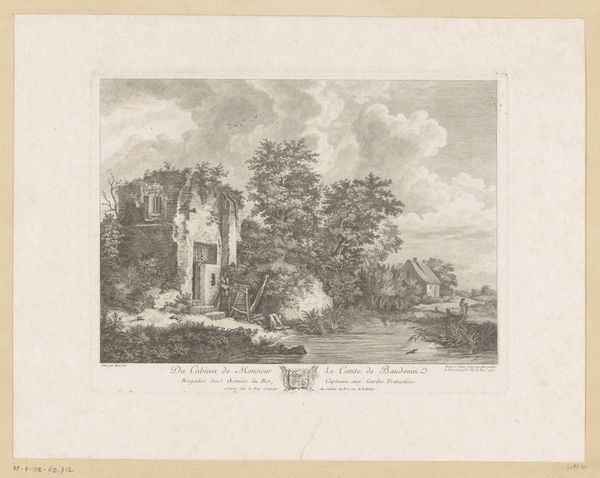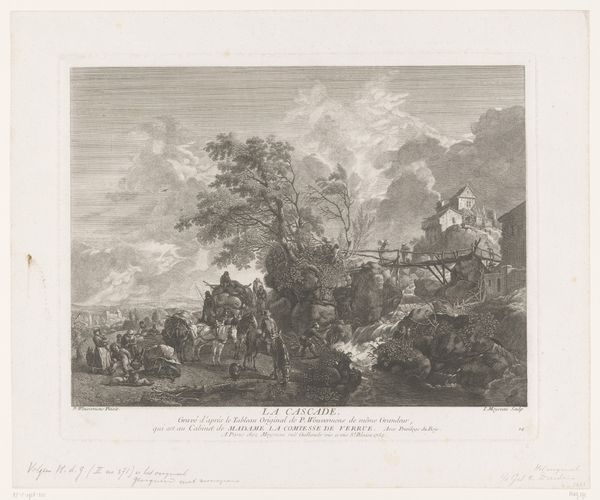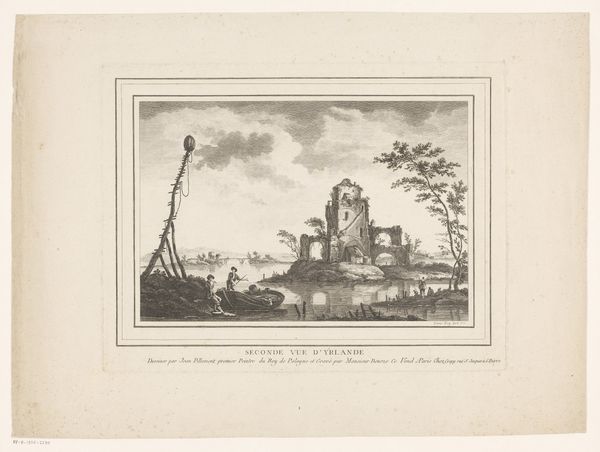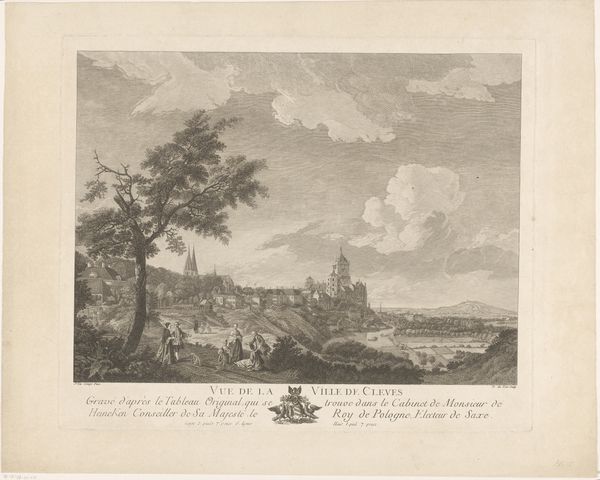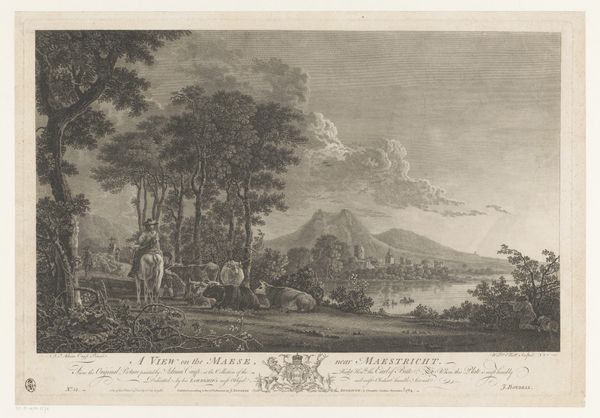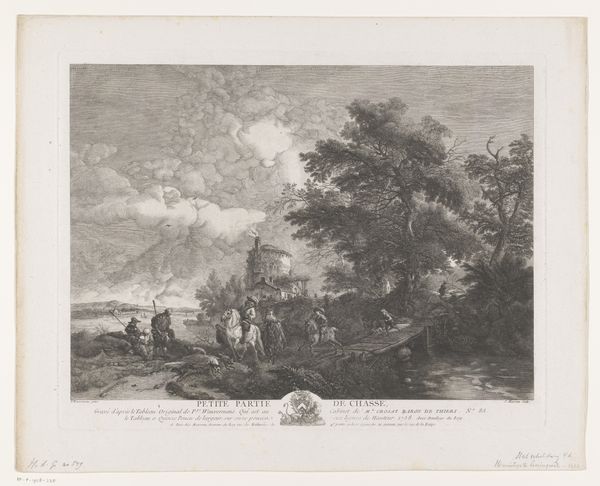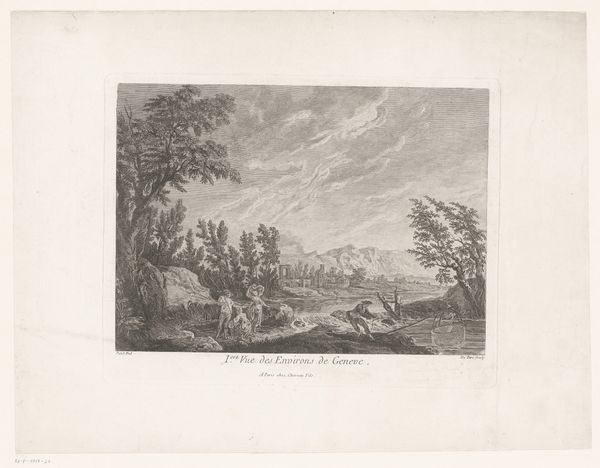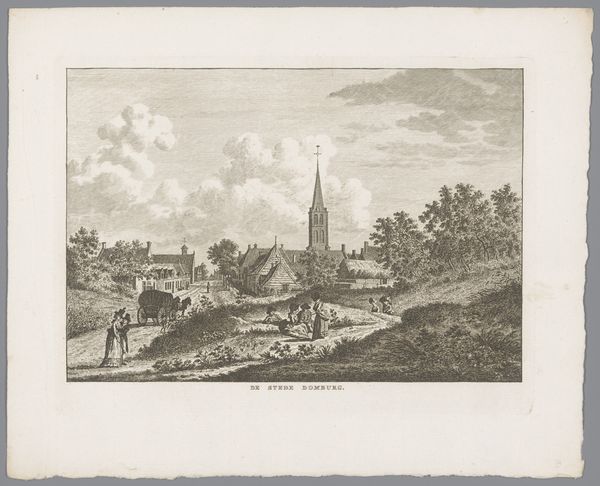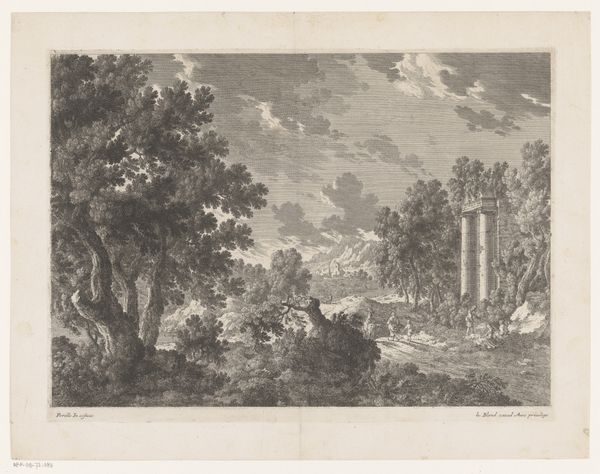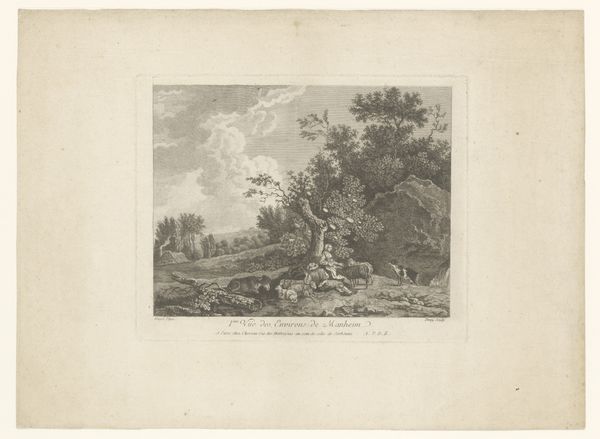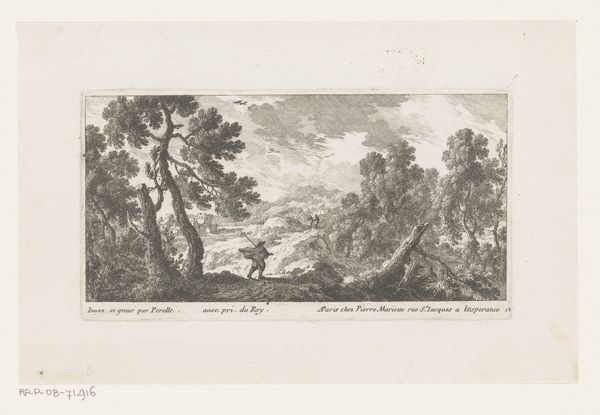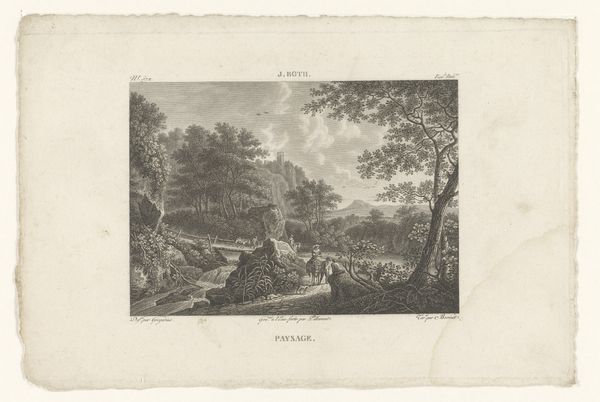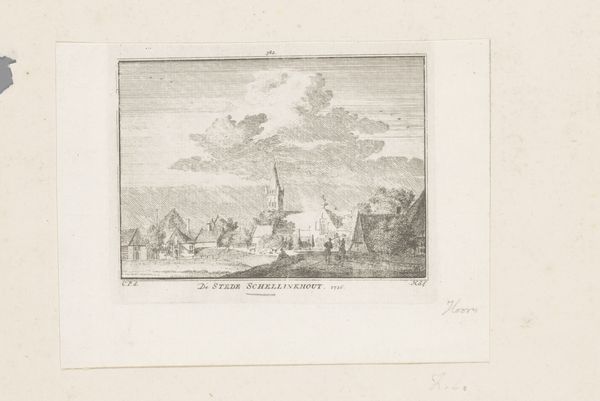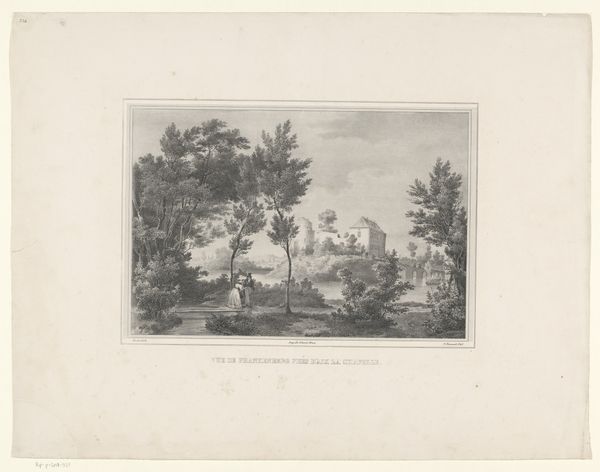
print, engraving
#
aged paper
#
baroque
# print
#
old engraving style
#
landscape
#
river
#
genre-painting
#
engraving
Dimensions: height 204 mm, width 264 mm
Copyright: Rijks Museum: Open Domain
Curator: Looking at "Molens in een rivierlandschap," or "Mills in a River Landscape," an engraving created in 1747 by Jacques Philippe Le Bas after a painting by Jacob van Ruisdael, now held at the Rijksmuseum, I'm struck by the way it encapsulates the Dutch relationship with the landscape. Editor: It's deceptively serene. The mills seem almost monumental, and yet, the technique conveys a fragility; a light transience reflected in the river's surface, the fine lines of the engraving suggest impermanence and human reliance on nature. Curator: Absolutely. Think about the Netherlands in the mid-18th century – a powerful trading nation built quite literally on reclaimed land. The image isn’t just picturesque; it reflects Dutch ingenuity and the constant battle against the water. Windmills, like the ones prominently displayed here, were integral to this socio-economic framework. Editor: It’s difficult to ignore the gendered implications, too. Landscapes often naturalize patriarchal claims of ownership. The meticulousness here hints at the subtle erasures necessary to craft such a representation, obscuring labor relations within this idyllic rural scene, doesn't it? It's also intriguing to think about how this image functions as a piece of propaganda, portraying an orderly, productive countryside. Curator: Indeed, it’s a constructed view. But let's remember this work is an engraving, a print. These were reproduced and circulated widely. So the public perception, and indeed mythologizing of, the Dutch landscape spread widely, shaping identity. Consider how this image helped construct a narrative of Dutch resilience, essential to solidifying a sense of national unity in that era. Editor: The engraving format itself deserves scrutiny; reproducing, and therefore democratizing access to art… until you consider who truly had access and who decided which stories needed representation! What does the translation to an engraved form achieve or erase of the painting itself? These decisions, and this representation of a landscape with water management technology as “pastoral,” it speaks to something deeper about national aspirations. Curator: A powerful perspective. Ultimately, analyzing art through a historic lens encourages understanding this interplay of land, power, and representation in shaping national consciousness. Editor: Right, prompting viewers to critically engage with landscapes as historical texts which were built, reshaped, owned, and represented to build narratives which favored some, but not all.
Comments
No comments
Be the first to comment and join the conversation on the ultimate creative platform.
